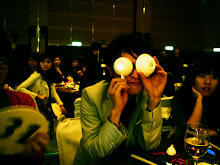





Designer come photographer Hedi Slimane, did an interview with HintMag.
Q&A with Hedi Slimane on his new book, Rock Diary (JRP|Ringier), a three-volume set of photos the designer-cum-photographer took at rock concerts over the last decade, focusing on the ritualistic interaction between stage idols—i.e. Amy Winehouse, The Klaxons, Pete Doherty—and their energized fans. One can see the same verve and vigor that Slimane—himself a hybrid of rock star and groupie—infused into his Dior Homme collections, and so much more...
You seem perfectly able and willing to go between observer and creator. I think that balance is fairly unique. How has that influenced your work?
I started with observing, since photography was my first passion. I assume that with time I developed an interaction between imagery and the design process. My work was always about one subject, one character that I tended to approach through different means. The balance is an attempt to avoid definition and to create a sense of perspective. I will never reach my goal, that is a given. I am just pretending, trying for something like utopia.
Many of your photos show people engaged in an activity, from surfing to rock concerts. Is that the definition of a cult? Can anything be a cult?
It is always about ritual and cult, you are totally right. This has always been, including my fashion shows and collections, without exception. I am consistently interested in the representation of the sacred, the making of signs and conventions, and the repetition of actions and devotions. Live performance is, of course, an obvious transposition of liturgy, and I guess any movement in street and youth culture has created a strict and formal code which was meant to define and transcend a distinctive group.
How do you think people expressed rebellion before rock?
Rock music pretty much catalyzed rebellion in the mid-50s and the understanding that there was some kind of time capsule between childhood and adulthood, which was challenging and explosive, to say the least. Besides, we can still go back to the 18th Century, to the court of Versailles, and figure out that music and new sounds were always the sign of some sort of rebellion. When Marie Antoinette imported [Christoph Willibald] Gluck to wake up the dance floor in the dusty Galerie des Glaces and displayed her elaborate hairstyle, she was being a rebellious teenager.
What does the future hold for rock? Will it last forever? Should it?
In a certain way, rock is an academic pursuit like any other. It is an extremely conventional culture, a pure tradition, and this is precisely why it will always be around and survive new genres. In this way, it is totally reassuring, which could mean it will always become cooler and more iconic. Besides, there have been no ways around it for the past fifty years. It will keep coming back, but never quite the same, reinforcing a legendary tradition.
Do you wish fashion had the kind of obsessive fans music has?
It has already. The Internet helped create an appeal for fashion and a fan culture that goes beyond knowledgeable. These fans have a true passion for details.
Have you ever wished you were a rock star in music, the way you were a rock star in fashion, and hopefully will be again?
Not at all. I always thought I stood behind a screen, sometimes a lens. I rarely felt exposed. It is not my nature, I assume, to stay "outside." Whatever happened was against my will.




No comments:
Post a Comment